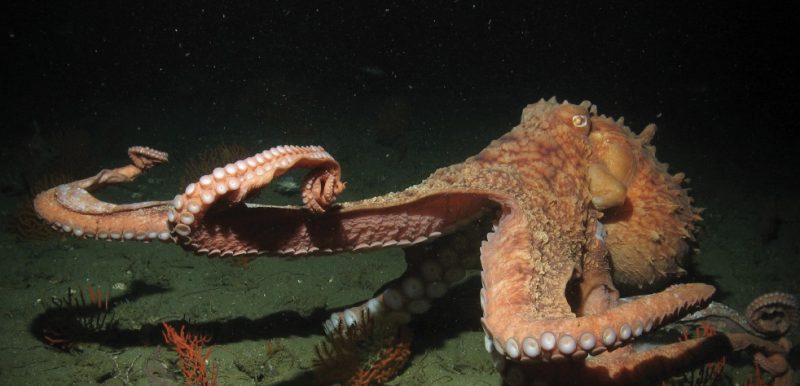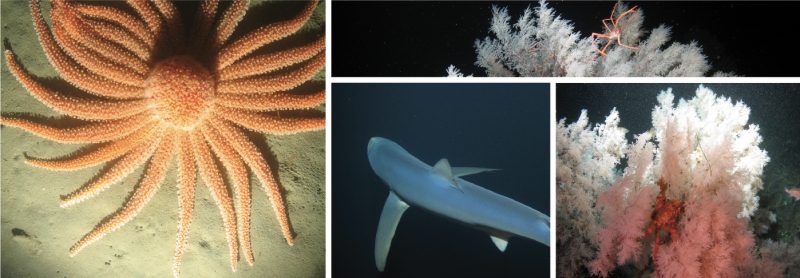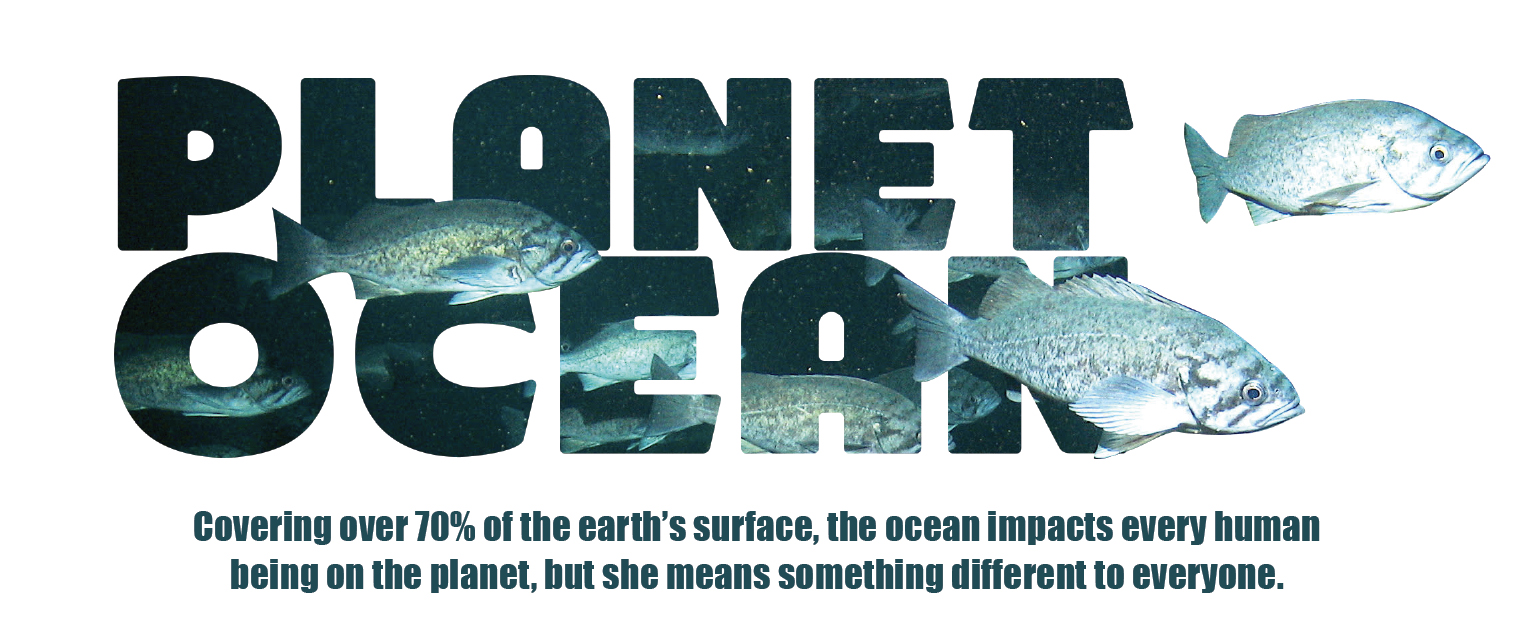Covering over 70% of the earth’s surface, the ocean impacts every human being on the planet, but she means something different to everyone.
The ocean fills the spirit of many, bringing peace and wonder with its meditative waves and unending mystery below the surface. She is life sustaining, providing oxygen for every other breath we take. She drives an economy, employing thousands through the fishing, transportation, hospitality, and restaurant industries. She shields us against climate change, absorbing 30% of carbon dioxide and regulating global weather patterns. And she offers promise to health and medical fields with compounds found in corals and sponges for treatments in cancer, arthritis, Alzheimer’s and other diseases. There are scores of books written about the human-water connection, or as Walter J Nichols calls it, the “Blue Mind”. Take a moment to consider what the ocean means to you.
 When you have an opportunity to take a good, long look at the ocean along the California coast, you will very likely see surfers and dolphins riding waves, whale spouts or breaches, and ships on the horizon. What you do not see are the fish and deep sea corals that are the very foundation of a healthy ocean, and feeding ground for the whales, dolphins and sea birds. Nor do you see the towering kelp forests off the coast that are home to over 1,000 species of animals and plants, and rocky reefs that explode with marine critters from elusive sharks to the endangered black sea bass.
When you have an opportunity to take a good, long look at the ocean along the California coast, you will very likely see surfers and dolphins riding waves, whale spouts or breaches, and ships on the horizon. What you do not see are the fish and deep sea corals that are the very foundation of a healthy ocean, and feeding ground for the whales, dolphins and sea birds. Nor do you see the towering kelp forests off the coast that are home to over 1,000 species of animals and plants, and rocky reefs that explode with marine critters from elusive sharks to the endangered black sea bass.
These deep sea ecosystems have been battling many threats over the past fifty years, including irresponsible and destructive fishing practices, invasive species, and climate change. Such threats have taken a toll on the parts of the ocean you cannot see. The great news is that with California’s Marine Protected Area program, we have the policy, technology and the tools to help her recover. When you can see a problem you can solve a problem. You may not be able to dive to 300 meters, but Marine Research & Exploration (MARE) can! With our specialized robotic submarines, MARE brings that deep sea to you, as well as to those responsible for making the rules about how we use our ocean through MPAs, our blue parks.
Marine Protected Areas are similar to national parks and forests; they are designated areas in the ocean that are monitored and managed to protect fish and invertebrates like octopus and lobster, and restore valuable habitats, like corals. With minimal human disruption through limited or restricted activity, such as fishing, marine life and habitat living in the MPAs are expected to revive and thrive. We know they are successful when we see a rebound in fish abundance and other marine critters both inside the MPA boundaries, and especially beyond the invisible boundary lines. Many recent scientific studies show that MPAs are working, and we are increasingly seeing more, and bigger, fish. For instance, a 2012 study off the coast of Santa Barbara found that lobsters were more abundant and larger within the designated refuge. In another study, MARE was able to show a 270% increase in fish inside the reserve over a decade of protection; this increase was seen outside of the MPA, as well, which made the fishing community very happy.

“People protect what they love, they love what they understand and they understand what they are taught.” – Jacques-Yves Cousteau
California’s blue parks are a powerful solution to bring our ocean back to her previous health. A recent study in the journal, Nature, indicates “MPAs represent a necessary and powerful recovery wedge across multiple components of the ocean ecosystem.” This idea is catching on: in 2000, only 0.9% of the ocean was protected, but MPAs now cover 7.4%. Scientists recommend that 30% protected by 2030 are the magic numbers to aim for in order to sustain our ocean’s health. With the current rate of protections like MPAs year over year, this is an achievable goal.
MPAs are just one tool in the toolbox to protect our ocean. Anyone and everyone can help ocean conservation. A dump truck’s worth of plastic enters the ocean each minute, 8 million tons annually. Researchers have predicted there will be more plastic than fish on the ocean by 2050. On the consumer side, we can all bring more intention to eliminating the need for single use plastics that end up in the ocean. There is an opportunity on the innovation side to develop more sustainable alternatives, too. Purchasing power extends to food choices. With over 3 billion people depending on the ocean for their primary source of protein, the ocean’s food security is neither infinite nor invincible. The global “we” can and are depleting [it: 90 percent of the largest ocean fish, like Atlantic salmon, tuna, halibut, and swordfish are gone. Apps and sites like www.seafoodwatch.org help all of us make more informed seafood choices.
No matter how you personally use the ocean – to swim, to fish, to dive, to deliver your favorite seafood dish – a healthy ocean benefits everyone. So breathe deeply. Close your eyes and let the sound of the waves wash over you. And know that you have a vital role to play in her renaissance.
About MARE
As an earlier adopter of the MPA strategy, California has been a leader in ocean health solutions and is decades ahead of many coastal governments. Marine Research & Exploration (MARE) has been working with the state for over 16 years to monitor and document ocean health. Using proprietary marine technology, MARE brings critical information and imagery to those who govern our state waters, so that they know what to protect and why. We also show, with pictures, video and data, that MPAs have been effective in California, which benefits everyone in the state. During these unprecedented times, we appreciate all donations of time, treasure and talent to assist in the intelligent management of our oceans. To learn more, tune into our discussion on Know the Rules of the Game podcast. Thank you in advance!

 ERIN O’Toole, Director of Development at Marine, Applied Research & Exploration (MARE)
ERIN O’Toole, Director of Development at Marine, Applied Research & Exploration (MARE)
 Kellie Aamodt, Board Member of Marine Applied Research & Exploration (MARE), and Former UPS, VP of Corporate Inside Sales
Kellie Aamodt, Board Member of Marine Applied Research & Exploration (MARE), and Former UPS, VP of Corporate Inside Sales
* See this Article and many more in it’s original publication at https://issuu.com/nawrb/docs/nawrb_mag_vol9_issue1

 Login
Login

















